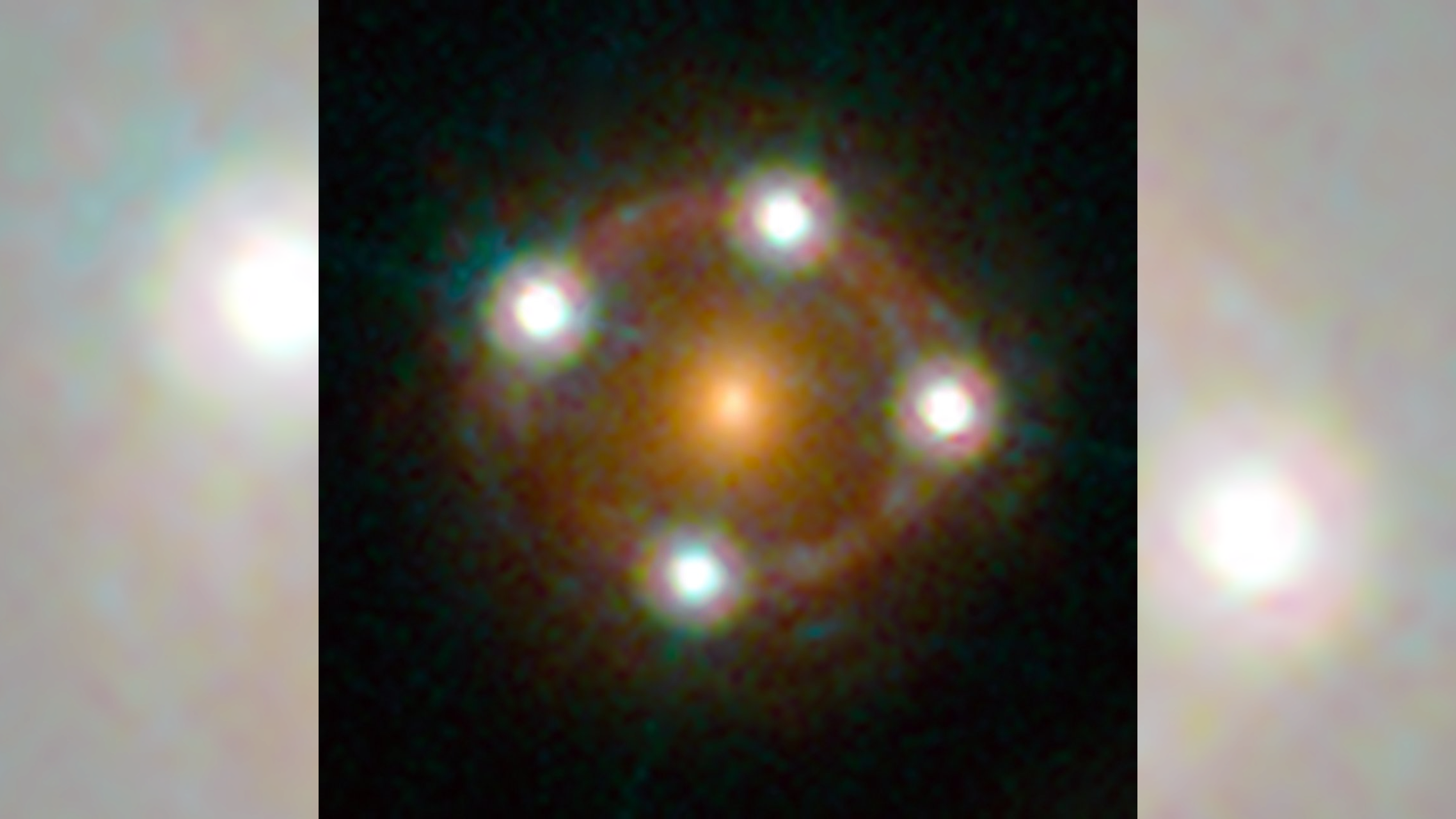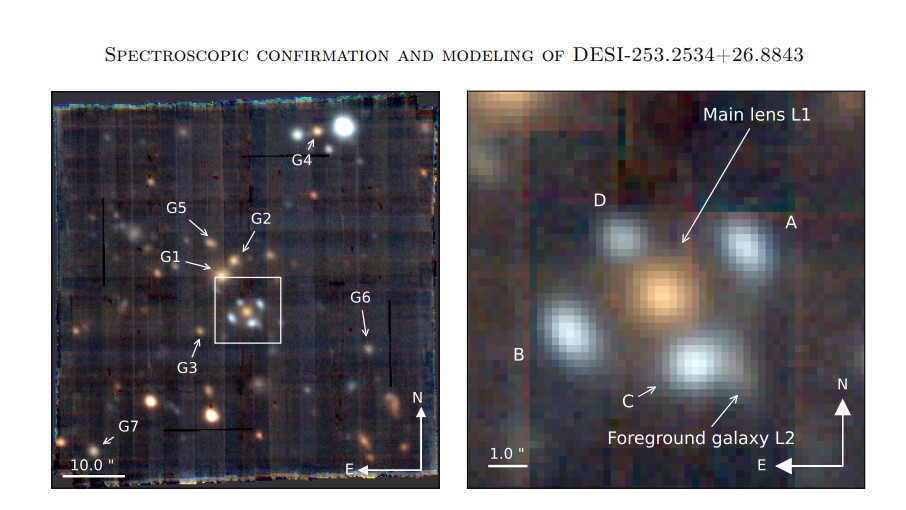
Astronomers have discovered a stunning, rare example of an "Einstein cross" splitting and magnifying light from the far depths of the universe.
In the image, one foreground elliptical galaxy, around 6 billion light-years from Earth, has warped and quadrisected a bright beam of light from a background galaxy about 11 billion light-years from our planet.
The resulting pattern, first predicted by Albert Einstein in 1915, shows four smudges of blue light haloed around the orange of the foreground galaxy — a rare arrangement that astronomers will study to get a better understanding of the universe.
Related: Distortions in space-time could put Einstein's theory of relativity to the ultimate test
The background light likely comes from a quasar, a young galaxy whose supermassive black hole at its core gobbles up enormous amounts of matter and blasts out enough radiation to shine more than a trillion times more brightly than the brightest stars.

Einstein's theory of general relativity describes the way massive objects warp the fabric of the universe, called space-time. Gravity, Einstein discovered, isn't produced by an unseen force; rather, it's simply our experience of space-time curving and distorting in the presence of matter and energy.
This curved space, in turn, sets the rules for how energy and matter move. Even though light travels in a straight line, light moving through a highly curved region of space-time, like the space around enormous galaxies, also travels in a curve — bending around the galaxy and splaying out into a halo.
What this halo looks like depends on the strength of the galaxy's gravity and the perspective of the observer. In this case, Earth, the lensing galaxy and the quasar have aligned to perfectly duplicate the quasar's light, arranging them along a so-called Einstein ring.
The lens was discovered in 2021 by the Dark Energy Spectroscopic Instrument, which is attached to the telescope at Kitt Peak National Observatory in Arizona. After the lens's discovery, the astronomers performed follow-up analyses with the Multi-Unit Spectroscopic Explorer at the Very Large Telescope in Chile, and confirmed that they had discovered an Einstein cross.
Astronomers have identified hundreds of Einstein rings, and they're not sought after only for the pretty pictures they make. As the rings work to magnify the light they bend, reconstructing the light smears into their original, pre-bent forms can enhance the details astronomers can spot in very distant galaxies.
Also, because the extent to which light bends depends on the strength of the gravitational field of the object that bends it, Einstein rings can act as a cosmic scale for gauging the masses of galaxies and black holes. Studying the distant light warping around these rings can even help scientists glimpse objects that would otherwise be too dark to be seen on their own, such as black holes or wandering exoplanets.
The research has been accepted for publication in The Astrophysical Journal Letters and is available on the preprint database arXiv.







